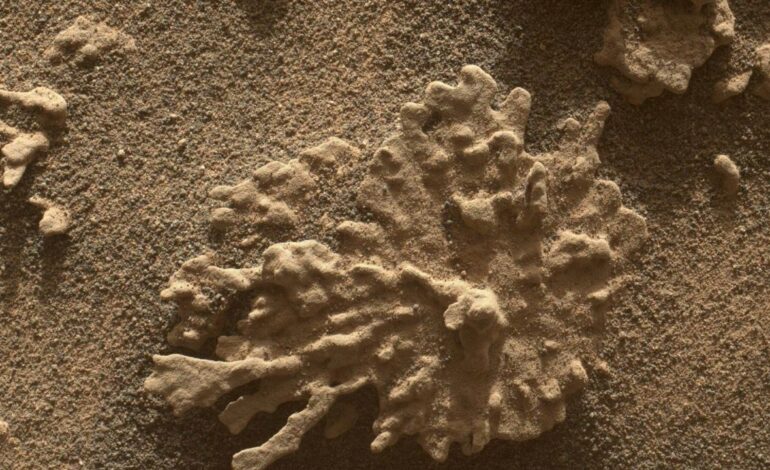Curiosity Rover Marks 13 Years on Mars with New Discoveries

NASA’s Curiosity rover celebrates its 13th anniversary on Mars, continuing to unveil the planet’s mysteries while adapting to the challenges of its aging technology. Since landing in Gale Crater on August 6, 2012, the rover has traversed more than 22 miles (35 kilometers), analyzing geological formations, soil samples, and revealing evidence that Mars once had conditions suitable for microbial life.
Despite facing wear and tear, including deteriorating wheels and occasional mechanical issues, engineers have successfully maintained the rover’s functionality. Recent software upgrades have enhanced Curiosity’s autonomy, enabling it to multitask and conserve energy. This improvement allows the rover to go into sleep mode earlier after completing its daily tasks, extending its operational life, according to a statement from NASA.
“We were more like cautious parents earlier in the mission,” said Reidar Larsen, a flight systems engineer at NASA’s Jet Propulsion Laboratory in California. “It’s as if our teenage rover is maturing, and we’re trusting it to take on more responsibility.”
Curiosity operates using a multi-mission radioisotope thermoelectric generator (MMRTG), which converts heat from the decay of plutonium into electricity. As the plutonium gradually loses potency, the energy output decreases, affecting the rover’s ability to recharge its batteries. Engineers have implemented strategies to maximize efficiency, combining previously separate tasks such as driving, capturing images, and data transmission. This consolidation reduces operational time, allowing the rover to save valuable energy.
By trimming just 10 to 20 minutes from its daily schedule, Curiosity can significantly extend its mission duration. Instead of idling while awaiting new commands, the rover autonomously rests when its work is complete, further preserving its power supply.
Curiosity has also made notable geological discoveries. Recently, it photographed a striking rock formation nicknamed “Paposo,” resembling coral. Captured on July 24, 2025, Paposo measures about two inches (five centimeters) wide and likely formed billions of years ago when Mars had more abundant water. Mineral-rich water seeped into the rock, leaving hardened deposits. Over time, erosive winds sculpted these deposits into the delicate structure observed by Curiosity.
The rover is currently exploring regions rich in “boxwork formations,” networks of ridges that suggest ancient water activity beneath Mars’ surface. These features are located on the lower slopes of Mount Sharp, a three-mile-high (five-kilometer-high) mountain that Curiosity has been investigating for years.
Overall, Curiosity remains in good health, supported by innovative engineering, updated algorithms, and energy-efficient practices. NASA’s efforts to adapt the rover’s operations ensure it remains active and capable of conducting scientific research on the Martian landscape. “Together, these measures are doing their job to keep Curiosity as busy as ever,” the agency noted in its statement.






